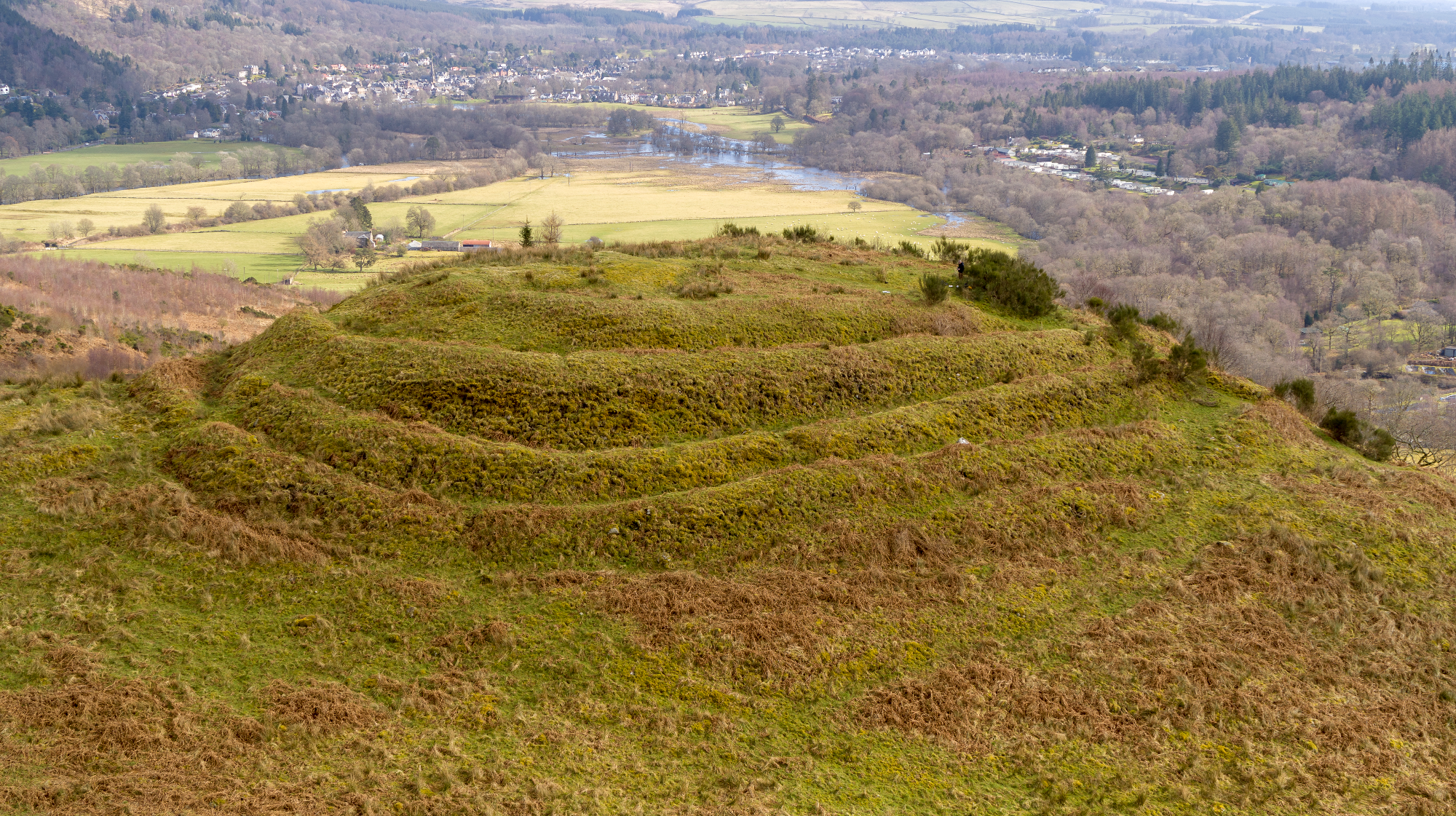
What is a hillfort?
A hillfort is a defended hilltop settlement. There are over 4000 known and possible hillforts in Britain and Ireland, and over 40% (1,695) of these are in Scotland.
The first hillforts in Scotland were built around 1000 BC, during the Late Bronze Age, but they were particularly prevalent in the Iron Age (around 800 BC to AD 400). Hillforts seem to have fallen out of use sometime in the early centuries AD, but they came back into fashion in the early medieval period; the latest hillforts date to around AD 700. The resources provided here focus on Iron Age hillforts.
Hillforts are formed by ramparts made of earth, stone or wooden palisades, or a combination of these elements, forming barriers around a hilltop to create an enclosure. Inside the enclosure were buildings – houses, workshops and so on. Often, forts had additional enclosures adjoining the main fort, on lower slopes to the side. These annexes may have been used for livestock.
Other defended settlements occur in elevated locations such as promontories and coastal stacks. There is evidence for many similarly enclosed settlements on low ground too, but these sites are more frequently damaged or erased entirely by agriculture or development. The prevalence of forts on high ground and is, to some extent, the result of differential survival: they remain visible today because the hilltops aren’t as suitable for crop cultivation or for building towns and cities. There were lots of forts on lower ground too, but many of these have been erased by centuries of cultivation taking place over the top of them.

The rocky outcrops on which Stirling Castle and Edinburgh Castle now stand were both once home to prehistoric forts. Clearly these locations were as desirable in prehistory as in the medieval period and beyond.
Why Hillforts?
Hillforts were once thought to be entirely defensive in nature, to protect against attack. These ideas were popular in the Victorian period, when it was widely believed that people in prehistory were wild and savage. Now we know that prehistoric society was more complicated, with highly developed social structures and hierarchies. Prehistoric art, for example, makes clear that the people living here thousands of years ago were highly skilled, imaginative and creative, with complex ideas to communicate.
Eildon Hill North, at the right, has the remains of one of Scotland’s largest hillforts on its summit
© Copyright Jim Barton and licensed for reuse under this Creative Commons Licence
One issue with the notion of hillforts as primarily defensive sites is that they are sometimes so huge, they would be almost impossible to defend. One of the largest hillforts in Scotland is at Eildon Hill North (right) in the Scottish Borders. The outer rampart encloses an area of over 15 hectares (for comparison, a football pitch covers less than one hectare). It would be very difficult to defend such a massive fort’s perimeter. Inside, there is evidence for hundreds of roundhouses, though these wouldn’t have all been in use at the same time. The fort was occupied in the Late Bronze, perhaps as early as 1000 BC until around 700 BC. The fort was abandoned for a while before being reoccupied in the Iron Age, in the first or second century AD, and abandoned again in the third or fourth century AD. The site was occupied over many hundreds of years, with periods of abandonment in between.
Rather than being defensive, hillforts may have functioned at least partly as social signifiers, or status symbols. These hilltop constructions with their massive ramparts would have been visible for miles around. They were a visual representation of the power of the people who had built them, or the people who had the power to control the resources required to build them: materials and people. Hillforts may have been built by communities, for communities, or they may have been built by people under duress, who were obliged to work for those more powerful than themselves. Somewhere between those stances is the notion that perhaps the people who built the hillforts could call on those nearby and ask them to help as part of a reciprocal system of exchange and loyalty.
Hillforts may have been central points for peoples of the past, meeting places and marketplaces. However, the evidence from excavated prehistoric hillforts in Scotland suggests that most were more domestic in nature: settlements rather than enclaves or strongholds.

